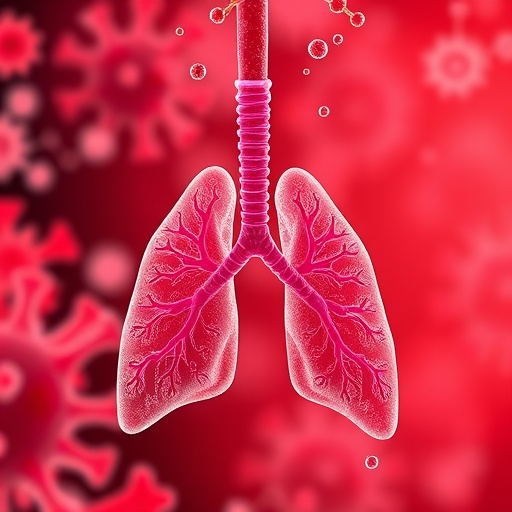Informal dialogues of the Intergovernmental Working Group (IGWG) on the WHO Pandemic Agreement – World Health Organization (WHO)
/overview-of-igwg3.tmb-1200v.jpg?sfvrsn=ecb7c172_1#)
Report on the Intergovernmental Working Group for the WHO Pandemic Agreement
The Intergovernmental Working Group (IGWG), established by the Seventy-eighth World Health Assembly, is undertaking the critical task of drafting and negotiating the Annex on the Pathogen Access and Benefit Sharing (PABS) System. This initiative, outlined in Article 12 of the WHO Pandemic Agreement, is fundamental to advancing Sustainable Development Goal 3 (Good Health and Well-being) by strengthening global capacities for managing health risks.
Core Focus: The PABS System and Global Equity
The primary objective of the IGWG is the operationalization of the PABS System. This system is designed to ensure timely access to pathogens for public health surveillance and response, while also guaranteeing that the benefits derived, such as vaccines and treatments, are shared equitably. This directly supports Sustainable Development Goal 10 (Reduced Inequalities) by creating a framework that prevents disparities in access to life-saving health technologies during pandemics.
Intersessional Dialogues: Fostering Collaborative Action
To facilitate progress, the IGWG Bureau has organized a series of interactive informal dialogues. These sessions are designed to foster multi-stakeholder collaboration, a cornerstone of Sustainable Development Goal 17 (Partnerships for the Goals). The dialogues will concentrate on key operational components of the PABS System.
- PABS contracts and legal agreements
- Relevant databases for sequence information
- Global laboratory networks
Stakeholder Engagement and Transparency
Reflecting the principles of SDG 17, the dialogues are open to all IGWG members and a broad range of relevant stakeholders. Participants include representatives from the private sector, laboratories, academic and research institutions, and sequence information databases. To ensure transparency, all sessions will be publicly webcast.
Schedule of Virtual Dialogues
-
Dialogue 1: Pathogen Access and Benefit-Sharing Contracts
Date: 24 November 2025, 12:30–15:30 CET
This session will address the contractual frameworks necessary to implement the PABS system, establishing clear and equitable terms that align with the principles of SDG 10 and SDG 17.
-
Dialogue 2: Databases and Laboratory Networks
Date: 25 November 2025, 12:30–15:30 CET
This discussion will focus on the infrastructure required for effective pathogen sharing. It addresses the need for robust data systems and laboratory networks, which are critical for innovation and resilient infrastructure as outlined in Sustainable Development Goal 9 (Industry, Innovation, and Infrastructure) and for achieving the global health security targets of SDG 3.
Sustainable Development Goals (SDGs) Addressed in the Article
-
SDG 3: Good Health and Well-being
- The article focuses on the negotiation of the WHO Pandemic Agreement, specifically the Annex on Pathogen Access and Benefit Sharing (PABS) System. This initiative is fundamentally aimed at strengthening global preparedness and response to pandemics, which is a critical component of ensuring global health security and promoting well-being for all.
-
SDG 17: Partnerships for the Goals
- The process described involves a multi-stakeholder approach. The article explicitly states that the dialogues are open to “IGWG members and relevant stakeholders… along with representatives of various sectors, including the private sector, laboratories and sequence information databases, academic entities and research institutions.” This collaborative effort to create a global agreement exemplifies a partnership for achieving a common goal.
-
SDG 16: Peace, Justice and Strong Institutions
- The article details the work of an “open-ended Intergovernmental Working Group (IGWG)” established by the World Health Assembly to draft and negotiate an international agreement. This process is a clear example of building effective and inclusive institutions at the global level to govern critical international issues like pandemic response. The creation of a formal PABS system represents the strengthening of global governance frameworks.
Specific SDG Targets Identified
-
Target 3.d: Strengthen the capacity of all countries, in particular developing countries, for early warning, risk reduction and management of national and global health risks.
- The entire purpose of the WHO Pandemic Agreement and the PABS System is to create a structured, global mechanism for managing the health risk of future pandemics. By facilitating “Pathogen Access,” it enhances early warning and research capabilities, and through “Benefit Sharing,” it aims to ensure that the resulting health technologies are accessible, thereby strengthening the risk management capacity of all nations.
-
Target 17.16: Enhance the global partnership for sustainable development, complemented by multi-stakeholder partnerships that mobilize and share knowledge, expertise, technology and financial resources.
- The article highlights the organization of “interactive focused informal dialogues” that bring together governments (“IGWG members”) and non-state actors (“private sector, laboratories… academic entities”). This process is a direct application of a multi-stakeholder partnership designed to share knowledge and expertise to build a robust PABS system.
-
Target 16.8: Broaden and strengthen the participation of developing countries in the institutions of global governance.
- While not explicitly stated, the principle of “Benefit Sharing” within the PABS system is designed to address inequities in the global health system. It ensures that countries, often developing nations, that provide pathogen data and samples also receive a share of the benefits (e.g., access to vaccines, diagnostics, or therapeutics). This mechanism inherently strengthens their role and stake in the institutions of global health governance.
Indicators for Measuring Progress
-
Implied Indicator for Target 3.d
- The article implies that the successful drafting, negotiation, and adoption of the “WHO Pandemic Agreement” and its “Annex on Pathogen Access and Benefit Sharing (PABS) System” would serve as a primary indicator of progress. This directly relates to the official indicator 3.d.1 (International Health Regulations (IHR) capacity and health emergency preparedness), as the agreement is designed to strengthen this exact capacity on a global scale.
-
Implied Indicator for Target 17.16
- The active participation of diverse stakeholders in the negotiation process is an implied indicator. The article mentions the inclusion of the “private sector, laboratories and sequence information databases, academic entities and research institutions” in the dialogues. The number and level of engagement of these non-state actors in the development of the PABS system can be used to measure the effectiveness of this multi-stakeholder partnership.
-
Implied Indicator for Target 16.8
- The establishment of concrete, equitable, and agreed-upon terms for “benefit-sharing” within the final PABS System would be a key indicator. The article notes that participants will discuss “contracts/agreements that would need to be established for this purpose.” The successful creation of these contracts with terms that ensure equitable benefits for all participating countries would be a direct measure of progress towards this target.
Summary Table: SDGs, Targets, and Indicators
| SDGs | Targets | Indicators |
|---|---|---|
| SDG 3: Good Health and Well-being | Target 3.d: Strengthen capacity for early warning, risk reduction and management of national and global health risks. | The successful establishment of the WHO Pandemic Agreement and the PABS System serves as a direct measure of strengthened global capacity for health emergency preparedness. |
| SDG 17: Partnerships for the Goals | Target 17.16: Enhance the global partnership for sustainable development, complemented by multi-stakeholder partnerships. | The active engagement of the private sector, laboratories, and academic institutions in the IGWG dialogues, as mentioned in the article, indicates a functioning multi-stakeholder partnership. |
| SDG 16: Peace, Justice and Strong Institutions | Target 16.8: Broaden and strengthen the participation of developing countries in the institutions of global governance. | The inclusion and successful negotiation of equitable “benefit-sharing” contracts within the PABS system is an indicator of strengthened participation and fairness in global health governance. |
Source: who.int
What is Your Reaction?
 Like
0
Like
0
 Dislike
0
Dislike
0
 Love
0
Love
0
 Funny
0
Funny
0
 Angry
0
Angry
0
 Sad
0
Sad
0
 Wow
0
Wow
0




















































.jpg.webp?itok=0ZsAnae9#)


















/countries/sri-lanka/photo-credit---dmc-sri-lanka.tmb-1200v.jpg?sfvrsn=dc298bcc_1#)







